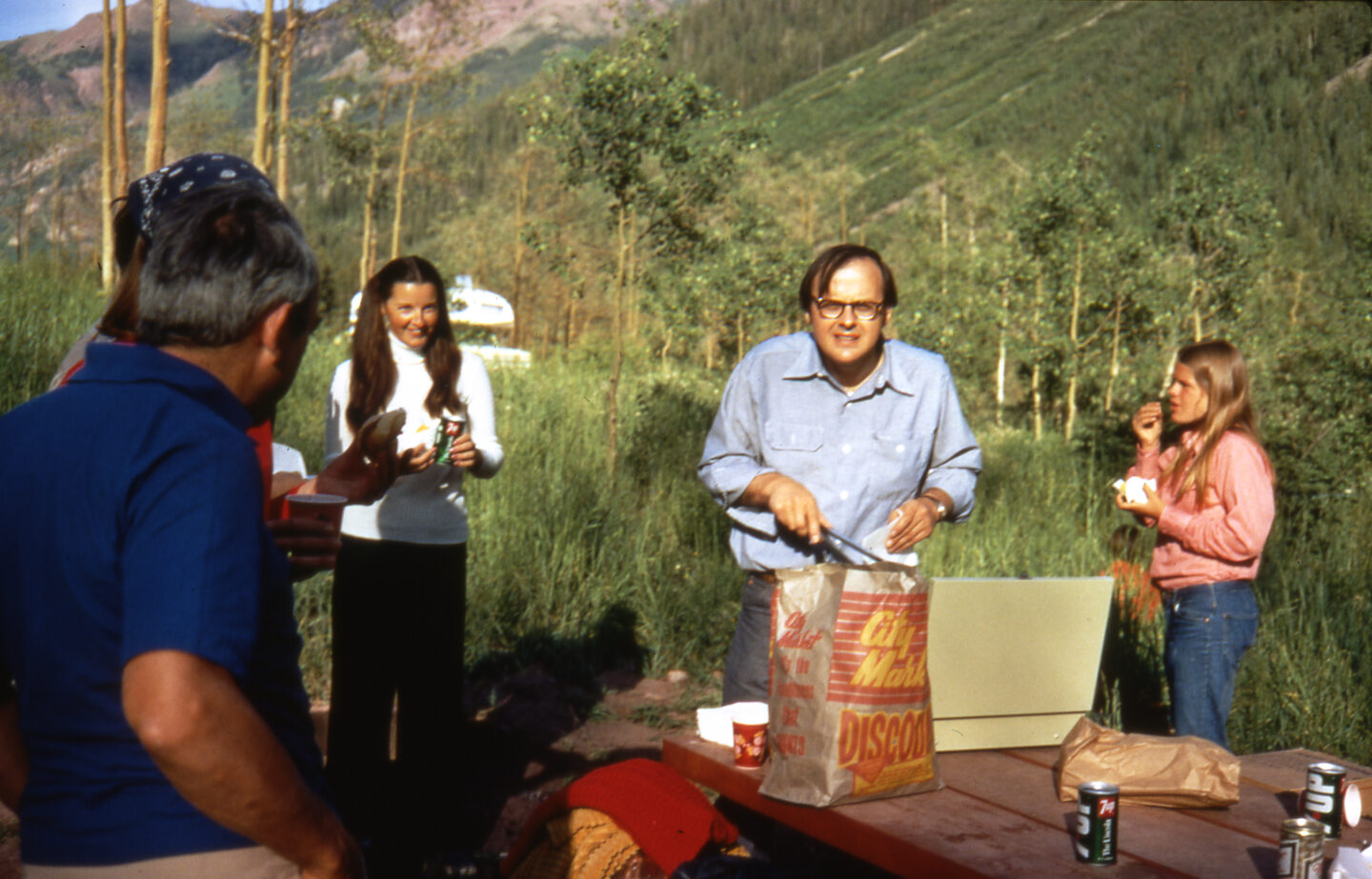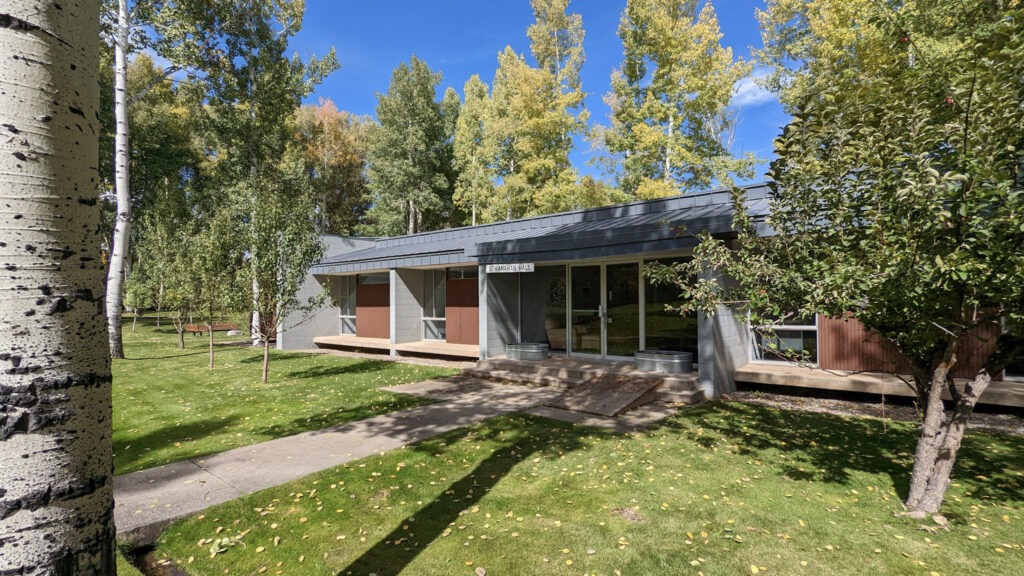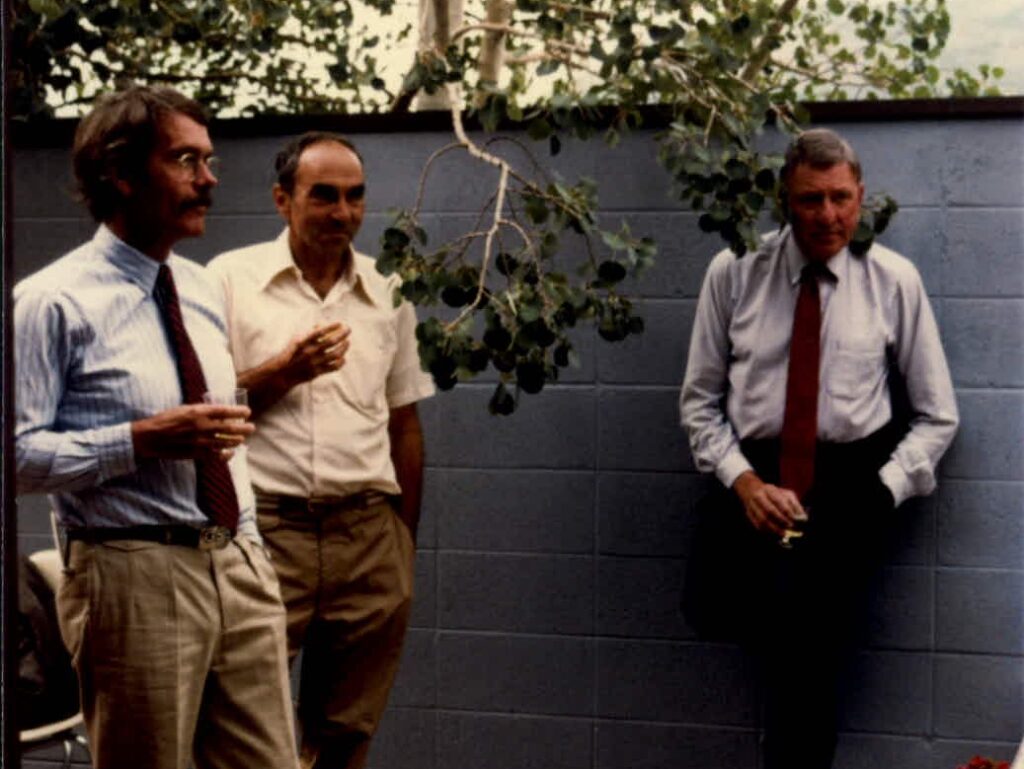Particle Physics: The Early Years
The early program at the Center (then the Physics Division of the Aspen Institute for Humanistic Studies) was very informal. There were no organized workshops, and people came when it fit their schedules and housing was available. There was not a lot of competition from topical conferences and summer schools (the regular ones in the U.S. were at Boulder where I had lectured on topics in particle physics for several years before 1962, and at Wisconsin), so it was possible to attract good people to Aspen without a formal program. In fact, the interactions across different research fields were one of the most stimulating aspects of coming to the Center, and led to unexpected collaborations and the sharing of ideas and theoretical methods.
Particle physics was very active at the Center from the beginning. In 1962, ~25 of the 42 participants and 9 of the 22 papers that we know of which cited the Center were in the particle area.
Some background: Particle physics was then a relatively new, much smaller field, but very exciting and evolving rapidly. People were moving into it from nuclear physics and other theoretical areas. It was still the era of bubble chambers. The main proton accelerators were the 6 GeV Bevatron at Lawrence Berkeley Laboratory, and the new Alternating Gradient Synchrotron at Brookhaven and CERN Proton Synchrotron at the seemingly enormous energies of 28 and 33 GeV. New particles and resonances were discovered frequently, and the exploration of their interactions and decays were major experimental activities. Parity violation in the weak interactions had been established in 1957, just 5 years before the Center started, and CP violation was discovered in 1964. There was altogether a surplus of data awaiting theoretical explanation, and no comprehensive theory.
As might be hoped, particle theory was developing rapidly. The approximate SU(3) symmetry of hadronic states had just been proposed by Gell-Mann and Ne’eman, and the quark model and current algebra of Gell-Mann were new. Field theory, with the light mesons and nucleons treated as elementary, did not give an especially useful description of the strong-interaction data except, as shown about then, for peripheral interactions. The emphasis for several years had therefore been on the analytic properties of scattering amplitudes and the information that could be derived using dispersion relations, crossing symmetry, unitarity, and input from the observed particle spectrum – “S-matrix theory.”
In the Center’s first years, the phenomenological emphasis changed rapidly from S-matrix theory to models based on Regge poles, as pushed early by Gell-Mann, Frautschi, and Zachariasen, the accompanying theoretical investigations of the complex angular momentum and Lorentz structures of scattering amplitudes, and on multiperipheral and other models that led to Regge behavior. The implications of the quark model and current algebra were also major areas of study, with some push into weak interactions as well. These shifts show up in the evolution of seminar topics over the years. All the areas were well represented in Aspen by principal practitioners.
Although there were no formal workshops, groups of physicists with similar interests often arranged to visit the Center at the same time. An ongoing theme among particle theorists for a number of years was “When will Murray (Gell-Mann) be there?” (Murray, who dominated particle theory in that period in a way that is hard to exaggerate, first came to the Center informally in 1964 while a participant in an arms-control seminar at the Aspen Institute, and then returned regularly from 1966 on, becoming a trustee when the Center was incorporated in 1968.)
An early example of an organized working group was that on the fundamental and rigorous axiomatic approach to quantum field theory which continued for a couple years and included Rudolf Haag, Derek Robinson, Jorge Swieca, Marcel Guenin, Th. Maris, and Daniel Kastler – an international group – and influenced the activities of several others. Robert Marshak, Susumu Okubo, and Ciaran Ryan organized a group one summer on weak interactions. Other groups formed spontaneously after people had actually arrived at the Center, for example, one on current commutation relations that included H. Suura, N. Fuchs, B. Schroer, M. Sugawara, and others. Some accounts of important individual research activities such as Steve Adler’s work on the axial anomaly in field theory, and of joint efforts, are given elsewhere.
As an interesting aside, Richard Feynman came to the Center in 1965. His visible activities consisted mainly of talking to the other participants and offering advice (“Explain what you are doing …. Stop!”… a pause while he reformulated the problem in his own language, then explained it back with suggestions). Less formally, he entertained the younger physics kids at a picnic at the Lincoln Creek campground by racing them while running backwards.
The particle physics activities expanded greatly when the experimental design studies for the 200 GeV accelerator at the National Accelerator Laboratory (now Fermilab) were held at the Center in 1968 and 1969 as described elsewhere. By around 1970, the idea that hadronic interactions could be described in terms of elementary quarks despite the mysteries of quark confinement had evolved into a serious effort by Gell-Mann and his collaborators to formulate this idea in terms of field theory. This culminated in the proposal of Gell-Mann and Harald Fritzsch of the gauge theory of the interactions of colored quarks – QCD – since established as the proper description of strong interactions.
The first program support for the Center from the National Science Foundation was received in 1972. Formal workshops in the various research areas were instituted the following year at the urging of the NSF. The ensuing rapid developments in the particle physics program are described in my presidential history.




